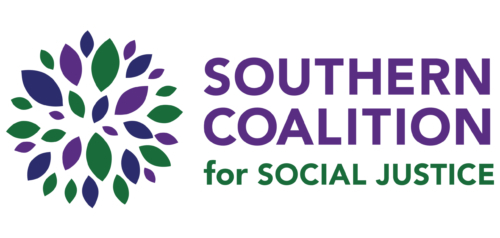This story was written by Gregory Childress and was originally published in The Herald-Sun on Tuesday, March 3, 2015.
DURHAM-The school board has adopted a resolution reaffirming its support of more than 300 unaccompanied migrant children who now attend Durham Public Schools.
The resolution was on the board’s consent agenda during a rare Monday night school board meeting held to make up for one missed last Thursday due to recent winter storms that dumped several inches of ice, sleet and snow on the Triangle.
Being placed on board’s consent agenda means an item will likely be approved.
“We are so committed to this cause that it’s on our consent agenda,” said school board Chairwoman Heidi Carter. “We didn’t even need to debate it because we know it is one of our values.”
The Durham City Council has also adopted a resolution pledging its support for unaccompanied migrant children.
Although the school board was expected to unanimously approve its resolution — and did, 7-0 — more than a dozen people attended Monday’s meeting to show their support.
One of them, Alex Herrera, a junior at Riverside High School, who migrated to the U.S., from Honduras at age 7, told the board that he knows well the hardships faced by the more than 300 unaccompanied migrant children who now attend Durham Public Schools.
“I still have family over there that tell me about the hardship, the poverty, the crime,” said Herrera, a member of the Latino Parent-Student Council Coalition.
School officials have said many of the children traveled to the U.S., alone and arrived with myriad problems, including gaps in their education, emotional trauma from abuse and other such problems that require extra resources.
Herrera said those problems don’t stop once the children reach the U.S.
“Now, they’re here and they’re struggling,” Herrera said. “They have increased in great numbers and they are visible in Durham Public Schools.”
Herrera said the school district is also struggling under the influx of the new students.
“At Riverside alone about 60 immigrant children are enrolled per semester and this school year we have tried to tutor them,” Herrera said. “The teachers have helped. The students have helped but it is not enough sometimes and we need that extra help from you.”
In October, school officials reported that DPS was serving 282 such children, primarily from the Latin American countries of Honduras, El Salvador and Guatemala.
The largest concentrations of unaccompanied migrant children were at Riverside High (55) and Jordan High (42). The next largest concentration was at Githens Middle School (35) and Creekside Elementary (28).
George Eppsteiner, a staff attorney for the Southern Coalition for Social Justice, said Durham is one of the largest jurisdictions in the state that has agreed to receive unaccompanied minors.
“It’s critical for this board to send a message that these children are welcome and will be supported in Durham Public Schools,” Eppsteiner said. “The reason that’s important is because there have been some unwelcome resolutions that have been passed in other local government jurisdictions and other areas that don’t have large populations of these children.”
Eppsteiner said the law, in fact, mandates that such migrant children be supported in the communities they reside.
He cited a more than 30-year-old Supreme Court in which the justices ruled against a Texas school district that tried to deny undocumented youth access to a free public school education.
“The Supreme Court said there is actually more harm in preventing these kids from accessing public education because the schoolhouse plays such a key role in their development,” Eppsteiner said.
Herrera said the decision to adopt the resolution will go far in showing the students that the board considers them important members of the school district.
“We are glad that this is not an issue that is being put to the side,” Herrera said. “Many times that is what happens when it doesn’t apply to our lives or it doesn’t affect us directly. You have taken into the account the importance of it. They are coming to the schools and that’s the first place that’s going to impact them. That’s the first place they learn the language and learn how the school system works.”
And regardless of whether the students remain in the U.S., Herrera said their experience here will follow them for a lifetime.
“That’s what’s going to help them out through life no matter [whether] they stay in this country of if they have to leave,” Herrera said. “Schools are the place where they start and it’s where they get the good or bad influence.”
